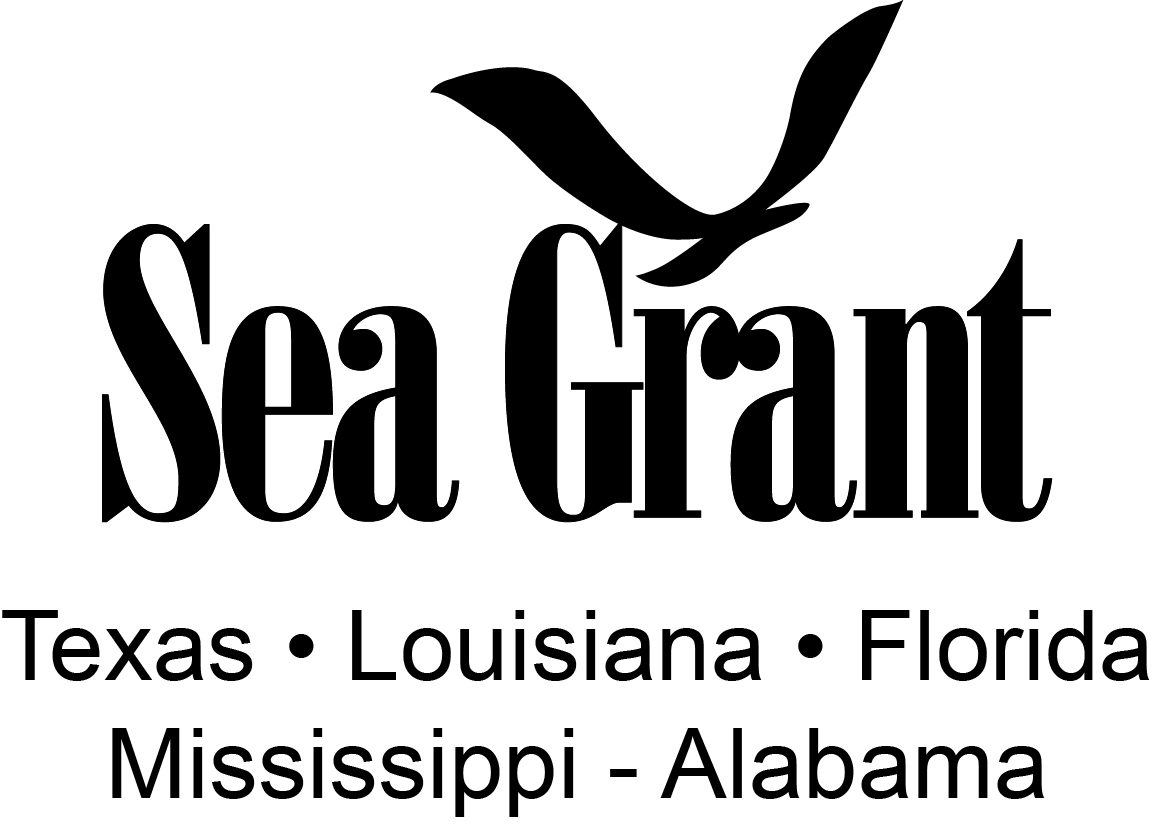April 14, 2016 – 9:00AM to 3:30PM Central
NOAA’s Gulf of Mexico Disaster Response Center
7344 Zeigler Boulevard
Mobile, AL 33608
This seminar was hosted by the Sea Grant Oil Spill Outreach Team and NOAA’s Gulf of Mexico Disaster Response Center. The seminar focused on the transport and fate of oil from the 2010 Deepwater Horizon oil spill. Scientists talked about oil on the seafloor, oil weathering, sedimentation, and marine snow. Recordings of the speakers’ presentations are available here.
Introduction to the Oil Spill Science Outreach Program
Monica Wilson is Florida Sea Grant’s oil spill research extension specialist. She facilitated the seminar and explained the Sea Grant-GoMRI oil spill science outreach program. View pdf. Recording not available.
Early challenges to the Deepwater Horizon oil spill response
Charlie Henry is the Director for NOAA’s new Gulf of Mexico Disaster Response Center (DRC) located in Mobile, Alabama. Henry serves as the DOC/NOAA trustee representative to Regional Response Team VI for oil and hazardous material incidents. During the Deepwater Horizon oil incident, Henry served as the lead NOAA SSC to the Unified Area Command. He provided any overview of the challenges that response teams had during the Deepwater Horizon oil spill. View pdf. Recording not available.
Tracers in the Gulf
Dr. Jeff Chanton is a Professor at Florida State University. He earned his Ph.D. from the University of North Carolina at Chapel Hill in 1985, and joined the faculty at Florida State University in the Department of Oceanography in 1989. Dr. Chanton spoke about oil on the seafloor. View PDF. View video (only second half of presentation was recorded due to technical difficulties).
Oil weathering: How did Macondo Well oil change over time?
Dr. Christoph Aeppli is a senior research scientist at Bigelow Laboratory for Ocean Sciences located in East Boothbay, Maine. He is an environmental chemist interested in how microbial and abiotic processes determine the fate of petroleum hydrocarbons in coastal and open ocean environments. He spoke about the abiotic and biotic processes that led to changes in oil on the sea surface and in sand/oil aggregates on beaches due to weathering. View pdf. View video.
Mapping the shape and composition of subsurface plumes in 2010
Dr. Chris Reddy is a chemical oceanographer and senior scientist in the Department of Marine Chemistry and Geochemistry at Woods Hole Oceanographic Institution in Woods Hole, MA. He studies marine pollution, especially oil spills, and useful chemicals from the sea. He is particularly interested in understanding how nature responds to the thousands of uninvited molecules released during spills. Dr. Reddy spoke about how the technology that was used to find and map the subsurface plume. View pdf. View video.
Question and Answer Panel – Morning Session
A question and answer panel session was held after the morning speakers. Attendees were able to ask Charlie Henry, Christoph Aeppli, and Chris Reddy questions about their work and other questions about the impacts of the Deepwater Horizon oil spill. Listen to recording.
Sedimentary impacts of the 2010 Deepwater Horizon event
Dr. Gregg Brooks is a professor at Eckerd College in St. Petersburg, FL. His research interests include the study of sediments and sedimentary processes in open marine and coastal systems, associated anthropogenic impacts, and the detection of individual depositional events preserved in the sedimentary record. He spoke about the impacts of the Deepwater Horizon oil spill on the sedimentary system, how the event is manifested in the sedimentary record, and how the sedimentary record may be used for management purposes. View pdf. View video.
Marine oil snow sedimentation flocculent and accumulation (MOSSFA)
Dr. David Hollander is an associate professor at the College of Marine Science, University of South Florida. His research focuses on evaluating the influence that anthropogenic and natural climate and environmental change have on the biogeochemical cycling of carbon, nitrogen, and other biolimiting elements in both modern and ancient lacustrine and marine settings. He introduced the concept of MOSSFA and how it forms. He discussed how the Mississippi River deltaic system and other environmental factors contributed to the formation of MOSSFA during the Deepwater Horizon oil spill. View pdf.View video.
Spatial extent of contamination in the Gulf of Mexico after the Deepwater Horizon oil spill
Dr. Isabel Romero is a geochemist at the College of Marine Science, University of South Florida located in St. Petersburg, FL. Her research focuses on environmental responses to disturbance using organic geochemistry analyses in sediments, water, and animals. She spoke about the spatial extent of contamination in the Gulf of Mexico using spatial and temporal assessment of hydrocarbon contamination in fish communities and sediments.View Video.
Question and Answer Panel – Afternoon Session
Attendees were able to ask Gregg Brooks, David Hollander, and Isabel Romero questions about their research and other questions about the impacts of the Deepwater Horizon oil spill. Listen to recording.
Other documents:
If you have any questions about this workshop, please contact Monica Wilson with Florida Sea Grant by email or at (727) 553-3516.
If you would like to learn more about upcoming seminars, please visit our presentations webpage or sign up for our oil spill science updates emails.



